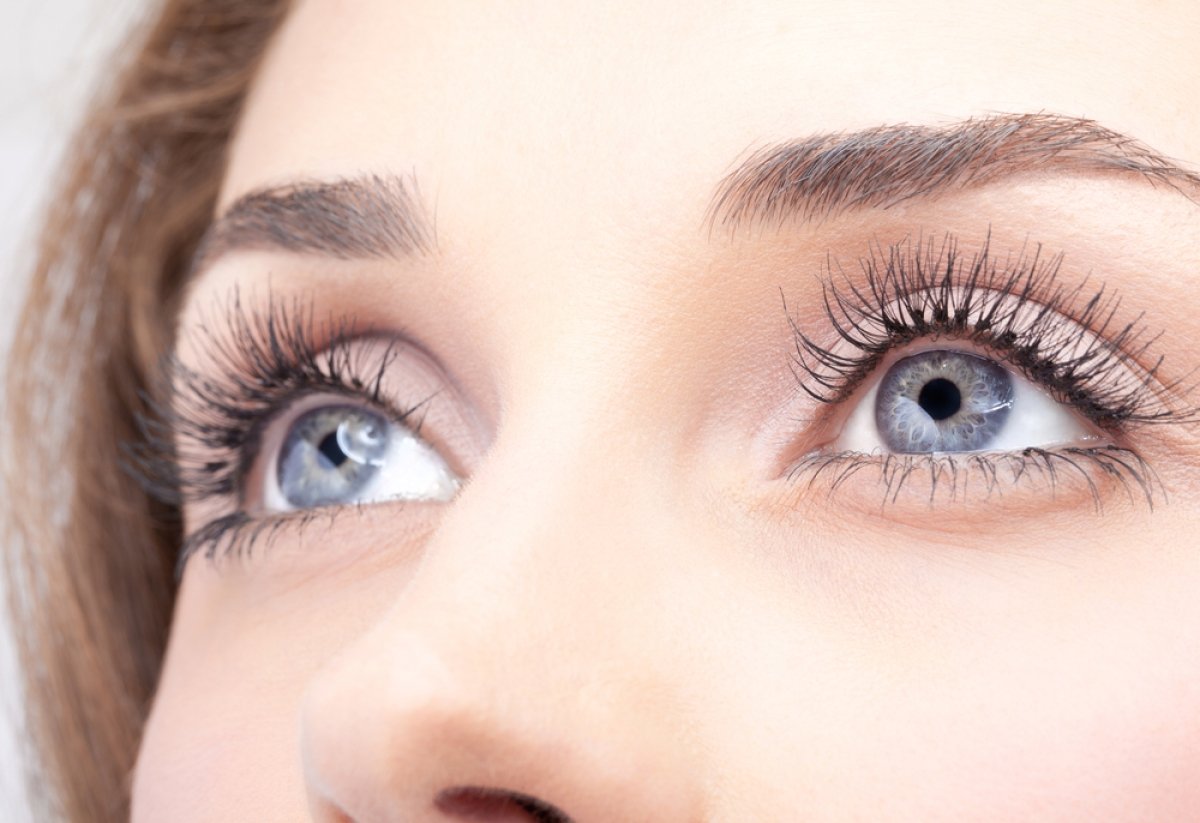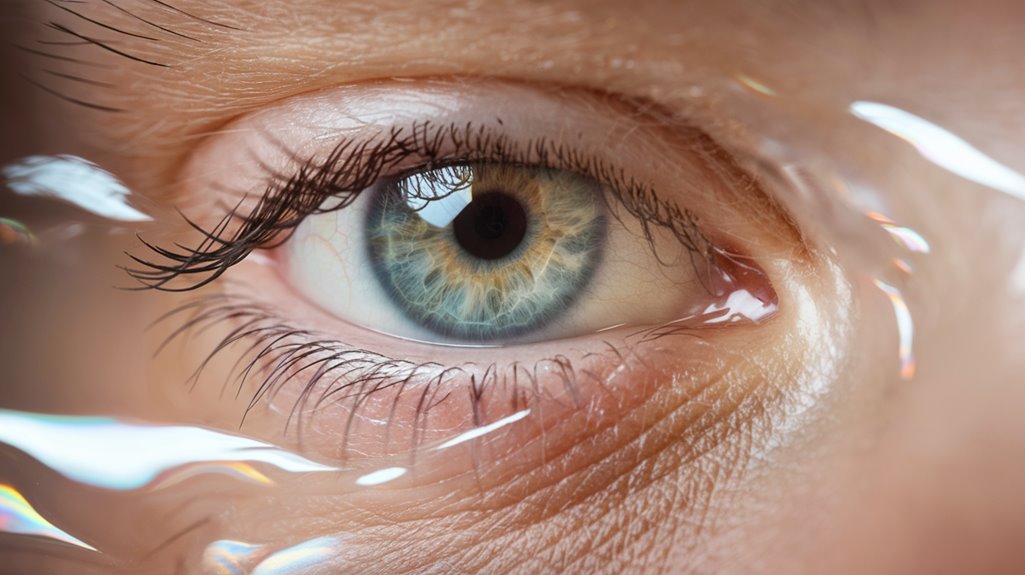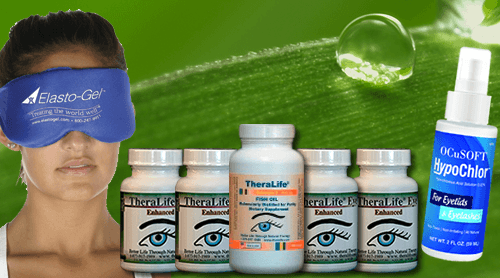TheraLife’s products offer significant benefits for individuals experiencing dry eyes and related conditions. Their comprehensive approach targets various factors contributing to dry eye syndrome, such as tear production deficiencies and corneal focus impairments. TheraLife’s products, including natural supplements and lifestyle recommendations, help restore tear film balance, reduce inflammation, and enhance overall eye health.
- Blepharitis Treatment: TheraLife provides insights and solutions for managing blepharitis, addressing inflammation and improving eyelid hygiene to alleviate symptoms.
- Living with Dry Eyes: They offer guidance on choosing optimal living environments and adapting lifestyle choices to minimize dry eye symptoms, ensuring a more comfortable daily experience.
- Eye Makeup and Dry Eyes: TheraLife educates on selecting eye makeup products that are safe for dry eye sufferers, helping prevent exacerbation of symptoms.
- Eye Discharge in Babies: TheraLife offers safe, effective treatments for managing eye discharge in infants, ensuring gentle care for sensitive eyes.
- Uveitis Management: Their natural treatment strategies focus on reducing inflammation and promoting healing, catering to those seeking holistic approaches to uveitis.
- Chalazion and Mites: TheraLife provides remedies for recurring chalazion issues and eyelash mites, offering solutions that prevent recurrence and promote eye health.
- Sjogren’s Syndrome and Diet: They offer dietary advice to support individuals with Sjogren’s syndrome, emphasizing an anti-inflammatory diet to improve overall health and alleviate dry eye symptoms.
Through their range of targeted products and educational resources, TheraLife empowers customers to take control of their eye health, reducing the risk of complications like corneal abrasions and severe vision loss.
Key Takeaways
- Tear film deficiency compromises corneal transparency, leading to blurred vision.
- Insufficient aqueous layer production causes dryness and vision distortion.
- Poor tear quality triggers corneal inflammation and blurriness.
- Aging reduces tear production, impacting vision clarity.
- Digital eye strain exacerbates dryness, impairing focus and sharpness.
Tear Production Deficiency
Tear production deficiency is a fundamental factor in dry eye disease, considerably impacting vision clarity. This condition arises primarily from tear film insufficiency and aqueous tear deficiency, resulting in reduced tear production. Common culprits include Sjögren Syndrome, autoimmune disorders, and systemic medications like antihistamines and diuretics, which further decrease tear production. Lacrimal gland dysfunction exacerbates the issue, leaving the ocular surface susceptible to irritation and blurred vision due to inadequate tear film coverage. As a result, you may experience symptoms such as grittiness and dryness, leading to tear instability and inflammation. Aging and hormonal shifts can also reduce tear production, highlighting the importance of understanding these mechanisms to mitigate the vision impact associated with this deficiency effectively. Environmental factors, such as wind and dry climates, can further aggravate dry eye symptoms by accelerating tear evaporation. Dry eye is the most common eye ailment globally and the leading reason for eye doctor visits, affecting a wide range of age groups.
Corneal Focus Impairment
Understanding tear production deficiency provides a foundation for exploring how corneal focus impairment affects vision in dry eye disease. When your eyes lack adequate tears, the corneal epithelium suffers, leading to corneal thickness variations. These variations disrupt the uniformity necessary for proper light refraction. Consequently, the refractive index changes, causing scattered light and vision distortion. The tear film’s role in maintaining corneal transparency is vital; without it, your vision becomes blurred. Furthermore, tears act as a barrier against bacterial infections. When they’re insufficient, your cornea is at risk of abrasions, ulcers, and scarring, further compromising corneal health and focus. Tears help protect the eye from bacteria and other pathogens, making it essential to manage and treat dry eye symptoms effectively. Factors like aging, lifestyle, and medical conditions exacerbate these issues, making it essential to manage and treat dry eye symptoms effectively. Additionally, digital eye strain from prolonged screen time can reduce blinking, worsening dryness and further impacting vision clarity.
Eye Fatigue and Strain
When your eyes are subjected to prolonged periods of strain, eye fatigue becomes a notable concern, particularly in today’s digital age. Extensive screen time and blue light exposure exacerbate symptoms such as blurred vision and difficulty focusing. Persistent eye strain can indicate underlying vision problems, necessitating professional evaluation. Dry eye syndrome is a common issue that can further blur your vision, and it’s often linked to complications like blepharitis and meibomian gland dysfunction. Lifestyle factors, including smoking, further elevate your risk of eye disease by over 50%. Implementing lifestyle adjustments is essential. The 20-20-20 rule—taking a 20-second break every 20 minutes to look at something 20 feet away—can greatly reduce strain. Regular eye exams help detect uncorrected refractive errors like nearsightedness and presbyopia, which contribute to fatigue. Additionally, environmental changes such as using humidifiers and protective eyewear can mitigate discomfort.
Inadequate Tear Lubrication
Inadequate tear lubrication is a critical factor in dry eyes, affecting tear film stability and leading to corneal surface disruption. When your tear film is deficient, it compromises the optical clarity, resulting in blurred vision due to irregularities on the corneal surface. This can be exacerbated by factors such as meibomian gland dysfunction, systemic diseases, and environmental conditions, all of which highlight the need for targeted intervention strategies. Chronic dry eyes can also lead to ocular complications such as blepharitis and corneal abrasions which further impair vision quality. Notably, decreased tear production due to age or certain medical conditions also plays a significant role in the development of dry eyes.
Tear Film Deficiency
Although often overlooked, tear film deficiency plays an essential role in dry eye syndrome by impairing the eye’s natural lubrication system.
The tear film consists of three critical layers:
- Lipid Layer: Produced by meibomian glands, this layer minimizes tear evaporation.
- Aqueous Layer: This layer maintains ocular moisture and nourishment.
- Mucin Layer: It guarantees even distribution of tears across the eye surface.
When any layer is disrupted, you may experience dry eye symptoms, leading to blurred vision. Blurred perception is a common complaint among dry eye sufferers, as recognized by the American Optometric Association.
Insufficient aqueous layer production can result from autoimmune diseases, hormonal changes, aging, or medications. An imbalance in the composition of tears can exacerbate these issues, further contributing to the symptoms of dry eye.
Similarly, excessive tear evaporation often stems from meibomian gland dysfunction, environmental factors, or prolonged contact lens use.
Addressing tear film deficiencies is vital to maintaining clear vision and preventing corneal damage.
Corneal Surface Disruption
As dry eye disease progresses, corneal surface disruption emerges as a significant factor contributing to inadequate tear lubrication. This condition impairs corneal integrity through the breakdown of homeostatic mechanisms, compromising the epithelial barrier. The glycocalyx layer, critical for maintaining corneal wettability, becomes disrupted, leading to epithelial damage and punctate epitheliopathy. This epithelial compromise prompts mucin upregulation, potentially resulting in filamentary keratitis. High evaporative stress and increased osmolarity can lead to superficial punctate keratitis (SPK) and filamentary keratitis. You may notice blurred vision due to these microerosions and corneal staining, which highlight the compromised barrier function. Diagnosing these issues involves fluorescein dye application and thorough eye exams. Effective management focuses on epithelial repair through methods like tight eye patching and antibiotics to prevent infections, alongside careful use of anesthetic drops to alleviate pain during the healing process. Inflammatory cytokines, such as IL-1beta and TNF-alpha, are induced by hyperosmolar stress and contribute to the pathophysiology of dry eye disease, highlighting the importance of addressing immune inflammatory mechanisms.
Vision Clarity Impairment
Following the corneal surface disruption, the issue of vision clarity impairment due to inadequate tear lubrication becomes apparent.
Vision health is compromised when tear stability falters, leading to blurry vision. Several factors contribute to this:
- Reduction in Tear Production: Aging, certain medications, and environmental factors like dry air can decrease tear production. Prolonged screen time decreases blink rate, which can also lead to an evaporation of tears and exacerbate dry eye symptoms.
- Poor Tear Quality: This can trigger inflammation, corneal abrasions, and even ulcers, further blurring your vision. Omega-3 fish oil can help improve tear quality by thickening natural tears and reducing evaporation.
- Symptoms of Dry Eyes: These include redness, irritation, and sometimes excessive tearing despite the “dry eye” label.
- Inadequate Tear Film: This instability allows for bacterial infections, increasing the risk of complications.
Optimal tear stability is essential for maintaining clear vision and preventing these adverse outcomes.
Addressing these factors can greatly improve vision clarity.
Light Sensitivity Issues
Light sensitivity in dry eyes stems from several underlying factors that exacerbate discomfort and visual disturbances. Trigeminal nerve inflammation near the cornea and an irregular ocular surface contribute greatly to photophobia. This irregularity, often due to a compromised tear film, causes light to scatter unpredictably, heightening your sensitivity. Light sensitivity triggers include environmental factors like fluorescent lighting, computer screens, and bright sunlight, which bombard your eyes with high amounts of blue light. Comorbidities such as migraines and Sjögren’s syndrome further worsen this condition. Autoimmune conditions such as rheumatoid arthritis and lupus can also lead to dry eyes, increasing the likelihood of light sensitivity. Notably, women are more affected by light sensitivity than men, emphasizing the need for gender-specific approaches to managing this issue. Symptoms manifest as painful reactions to light, such as eye pain and headaches, often leading you to squint or avoid bright environments. Night driving becomes challenging due to glare from headlights, greatly impairing your quality of life.
Excessive Tearing Effect
Why does excessive tearing occur even in dry eye conditions? It’s a paradoxical reflex response to irritation triggers. When the eye’s surface is overstimulated, poor-quality basal tears fail to protect and nourish effectively, leading to inflammation. Ignoring dry eye can lead to severe complications, including blindness, which underscores the importance of understanding and addressing this condition.
This irritation prompts the production of reflex tears, which, while abundant, don’t offer sufficient ocular nutrition. Consequently, you experience watery eyes and blurred vision.
Here’s how it unfolds:
- Overstimulation: The ocular surface becomes overly sensitive due to poor tear film quality.
- Inflammation: Chronic inflammation sets in, exacerbating irritation triggers.
- Reflex Response: The body overproduces reflex tears to counteract discomfort.
- Vision Impact: Excessive tearing distorts vision clarity until relief measures are applied.
Understanding this cycle highlights the importance of addressing underlying dry eye issues. Psychological support may enhance treatment outcomes, as individuals with dry eyes often experience decreased life satisfaction and increased discomfort.
Risk of Vision Loss
When you leave dry eye syndrome untreated, it can lead to complications such as corneal abrasions, ulcers, and scarring, all of which pose a risk of vision impairment or loss. Dry eye syndrome is prevalent in millions worldwide and can significantly affect those with computer vision syndrome. While dry eyes themselves don’t directly cause blindness, the associated corneal damage and increased susceptibility to bacterial infections can severely impact your vision if not managed properly. It’s essential to address these risks promptly to prevent potential permanent vision damage. Regular eye exams are crucial for monitoring dry eye symptoms and making necessary treatment adjustments.
Untreated Dry Eye Complications
Even though dry eye syndrome doesn’t directly cause blindness, ignoring it can lead to severe complications that threaten vision integrity. Chronic irritation can predispose you to corneal infections, which greatly increase the risk of vision impairment.
Here’s how untreated dry eye can affect you:
- Corneal Damage: Prolonged dryness may cause scratches and ulcers on the cornea, leading to scarring.
- Infections: Dryness heightens susceptibility to bacterial infections like conjunctivitis and keratitis.
- Blurry Vision: Damage to the cornea causes intermittent blurry or cloudy vision.
- Vision Loss: Severe cases of corneal scarring can culminate in permanent vision loss.
Addressing dry eye promptly is essential to prevent these complications and preserve your visual health.
Permanent Vision Damage Risks
Untreated dry eye syndrome poses considerable risks to your vision, with potential for permanent damage.
Chronic irritation leads to inflammation of the cornea, increasing susceptibility to vision-threatening complications such as corneal ulcers and scarring. These conditions can cause irreversible vision loss if not addressed promptly.
The persistent inflammation also heightens the risk of corneal infections, further compromising your ocular health. Severe dry eye may result in permanent corneal damage, considerably impairing your ability to perform daily tasks like driving and reading.
Beyond discomfort, chronic dry eye is a serious condition that can decrease your quality of life and requires medical intervention to prevent lasting vision impairment.
Addressing underlying causes and seeking treatment is essential to mitigate these risks.
Frequently Asked Questions
Can Screen Time Worsen Dry Eyes and Affect Vision Clarity?
Yes, screen time can worsen dry eyes and affect vision clarity.
Your screen habits, like reduced blinking and close proximity to digital devices, decrease tear production and increase evaporation. This leads to poor tear film stability, causing blurred vision.
Incomplete blinks and prolonged exposure to screens alter tear composition, exacerbating symptoms.
Evidence-based strategies, such as the 20-20-20 rule and artificial tears, mitigate these effects, ensuring better ocular health and visual clarity.
How Do Hormonal Changes During Pregnancy Impact Dry Eye Symptoms?
During pregnancy, hormonal fluctuations greatly impact dry eye symptoms. Elevated estrogen levels disrupt tear production, causing discomfort and blurry vision.
Changes in blood circulation affect tear glands, reducing tear output. You might experience stinging, burning, or sensitivity to light as a result.
Managing these pregnancy symptoms involves staying hydrated, using artificial tears, and avoiding irritants.
Consulting an eye specialist guarantees tailored solutions, safeguarding your ocular health throughout this critical period.
What Role Do Nutritional Imbalances Play in Dry Eye Development?
Nutritional deficiencies play a significant role in dry eye development by triggering inflammatory responses.
When your diet lacks nutrients like Vitamin A and Omega-3 fatty acids, your tear production decreases, leading to dry eyes. These deficiencies can elevate inflammation, worsening symptoms.
Consuming foods rich in these nutrients or supplements can help. It’s essential to maintain a balanced diet and stay hydrated to support your ocular health and mitigate dry eye symptoms.
Are There Specific Eye Exercises That Alleviate Dry Eye Symptoms?
You can alleviate dry eye symptoms by incorporating eye yoga and blink exercises into your routine.
Eye yoga, like tracing a figure-eight pattern, stimulates tear production and enhances eye moisture.
Blink exercises, such as the complete blinking technique, guarantee full eyelid closure, maintaining eye lubrication.
Evidence suggests that these methods improve tear film stability and reduce ocular surface irritation, offering an effective, non-invasive approach to managing dry eye syndrome.
How Can Environmental Conditions Contribute to Worsening Dry Eyes?
Did you know that a 10% decrease in humidity levels can increase tear evaporation by up to 40%?
Environmental conditions like low humidity and air pollution play an essential role in exacerbating dry eyes.
These factors compromise your tear film’s stability and increase tear evaporation rates.
High levels of air pollutants, including particulate matter, irritate your eyes, reducing tear production.
Managing these elements can greatly enhance your ocular surface health and mitigate dry eye symptoms.
Conclusion
Theralife.com offers a variety of products designed to benefit those suffering from dry eyes and related conditions. Their comprehensive approach includes effective treatments for conditions such as blepharitis, which can significantly improve eye comfort and clarity. Theralife’s products target the root causes of dry eyes by enhancing natural tear production and providing relief from symptoms like irritation and blurred vision. By addressing these issues, Theralife helps maintain clear and healthy eyesight, preventing further complications.
Their website shares success stories, such as one individual who overcame blepharitis with Theralife’s targeted solutions. Additionally, Theralife provides insights into the best and worst places to live for those with dry eyes, helping individuals make informed lifestyle choices. They also offer guidance on managing eye makeup with conditions like blepharitis and MGD, ensuring that beauty routines do not aggravate symptoms.
Theralife extends its support to various eye conditions including chalazion, trichiasis, and uveitis, offering natural and effective treatments. Their products are also beneficial for managing symptoms of Sjogren’s syndrome and rosacea-related dry eyes. By incorporating an anti-inflammatory diet and other holistic approaches, Theralife aids in reducing discomfort and enhancing eye health.
Overall, Theralife.com is committed to providing solutions that not only alleviate symptoms but also improve overall eye health, offering a holistic approach to managing and treating dry eyes and related conditions.




